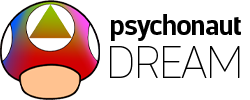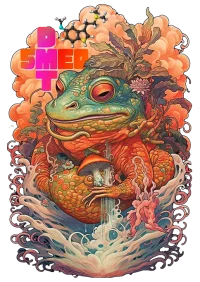A Deep Dive into the Risks, Realities, and Regulatory Landscape of Sacred Psychedelics
PART 1: Understanding Entheogens — Nature, Nuance, and Neuroscience
What Are Entheogens?
The term entheogen comes from the Greek words entheos (“full of the god, inspired”) and genesthai (“to come into being”). Unlike synthetic drugs or recreational psychedelics taken for pleasure, entheogens are substances—usually plant-based or naturally occurring—that are traditionally used for spiritual, mystical, or shamanic purposes.
Common examples include:
- Psilocybin mushrooms (magic mushrooms)
- Ayahuasca (a brew made from Banisteriopsis caapi and Psychotria viridis)
- Mescaline (found in peyote and San Pedro cacti)
- DMT (naturally occurring in many plants and even in the human body)
- Iboga (from the root bark of the Tabernanthe iboga plant)
These substances induce altered states of consciousness that can include mystical experiences, ego dissolution, and radical shifts in perception, often leading users to report a deepened connection to self, nature, or the universe.
The Neuroscience of Entheogens
Modern science has begun unpacking how these compounds work in the brain:
- Psilocybin and LSD bind to serotonin 2A receptors, increasing brain network connectivity.
- Ayahuasca’s DMT component combined with MAO inhibitors creates a prolonged, introspective trip often described as emotionally cathartic.
- Studies using fMRI have shown decreased activity in the brain’s Default Mode Network (DMN)—associated with the ego—potentially explaining the common sensation of ego death or self-transcendence.
These changes correlate with increased emotional openness, decreased fear responses, and long-term positive shifts in personality traits like openness and empathy.
The Neuroscience of Entheogens
Modern science has begun unpacking how these compounds work in the brain:
- Psilocybin and LSD bind to serotonin 2A receptors, increasing brain network connectivity.
- Ayahuasca’s DMT component combined with MAO inhibitors creates a prolonged, introspective trip often described as emotionally cathartic.
- Studies using fMRI have shown decreased activity in the brain’s Default Mode Network (DMN)—associated with the ego—potentially explaining the common sensation of ego death or self-transcendence.
These changes correlate with increased emotional openness, decreased fear responses, and long-term positive shifts in personality traits like openness and empathy.
Are Entheogens Safe?
Let’s be clear: no psychoactive substance is entirely without risk, but entheogens rank among the least toxic known substances—physiologically speaking. Here’s a nuanced safety breakdown:
✅ Relatively Low Toxicity
- Psilocybin and LSD have extremely low lethal dose thresholds—many times higher than anyone would ever consume.
- Physical addiction potential is virtually non-existent.
- Compared to alcohol, tobacco, or opioids, entheogens are astronomically safer by any statistical measure.
⚠️ Psychological Risk Factors
- Pre-existing mental health issues (especially schizophrenia or bipolar disorder) can be triggered or worsened.
- Set and setting matter enormously. A disorienting environment or negative mindset can lead to panic, paranoia, or long-lasting distress.
- Unintegrated experiences can cause confusion, emotional upheaval, or dissociation.
⚠️ Physical Risks (Mostly Contextual)
- Ayahuasca can dangerously interact with SSRIs or heart conditions.
- Iboga has been linked to cardiac issues and even death in unsupervised settings.
- Vomiting, nausea, and diarrhea are common with ayahuasca and peyote — often considered part of the “cleansing” process but still worth noting.
PART 2: Legal Status of Entheogens — A Complex Global Landscape
Global Legal Overview
Entheogens occupy a gray and rapidly evolving legal space, varying widely by country and even within regions of the same country.
🌎 United States
- Psilocybin is federally classified as a Schedule I drug (no accepted medical use, high potential for abuse).
- However, decriminalization and legalization are gaining ground:
- Oregon legalized psilocybin therapy statewide.
- Cities like Denver, Oakland, Seattle, and San Francisco have decriminalized natural entheogens.
- Ayahuasca remains technically illegal, but religious exemptions (e.g., UDV, Santo Daime) allow ceremonial use.
🇨🇦 Canada
- Psilocybin is illegal but allowed in certain cases via special exemptions for medical or religious use.
- There’s growing legal interest and activist momentum for broader decriminalization.
🇧🇷 Brazil
- Ayahuasca is legal for religious use and recognized as a sacred medicine.
- Other entheogens are often tolerated in ceremonial contexts.
🇳🇱 Netherlands
- Psilocybin mushrooms are banned, but psilocybin truffles (sclerotia) are legal and sold in smart shops.
- Retreat centers flourish under this legal loophole.
🇵🇪 Peru
- Ayahuasca is legal and widely used in traditional Amazonian medicine and spiritual tourism.
🚫 Prohibition States
- Countries like Japan, Singapore, and the UAE have strict anti-drug laws. Possession of any psychedelic can carry severe penalties, including imprisonment or worse.
The Rise of Legal Loopholes and Workarounds
- Religious freedom: In many countries, entheogens are permitted for religious or spiritual ceremonies. This is true in the U.S. under the Religious Freedom Restoration Act (RFRA).
- Microdosing kits: Companies are beginning to offer psilocybin microdosing packages in legal gray markets (e.g., Canada, the U.S. via spore kits).
- Therapeutic frameworks: Legal psychedelic-assisted therapy is emerging under FDA trials and state-level exemptions.
But beware—gray markets aren’t green lights. Participating in underground ceremonies, ordering spores online, or traveling with entheogens could still get you in serious legal trouble.
PART 3: So… Should You Use Entheogens?
When (and If) Entheogens Make Sense
Here’s where things get real. You might be wondering:
- Is this worth the legal risk?
- Is it safe for my mental health?
- What would I actually gain from it?
The answer depends on your intentions, your context, and your preparation.
✅ Good reasons to explore entheogens:
- You’re called to introspection or healing after trauma.
- You’re interested in expanding your worldview or dissolving limiting beliefs.
- You’re in a place of relative psychological stability and openness.
❌ Risky reasons to use:
- You want to escape current problems or numb pain.
- You’re in a chaotic emotional period or on psychiatric medications.
- You’re peer-pressured or unsure what you’re getting into.
Set, Setting, and Integration: The Holy Trinity
Set = your mindset
Setting = your environment
Integration = how you process the experience afterward
All three are essential. Even a “bad trip” can become a powerful learning experience if integrated well. Conversely, even the most profound journey can be wasted—or traumatic—without the right support.
Final Word: Know the Terrain Before You Trip
Entheogens are not toys. They’re not recreational distractions. They’re powerful tools of transformation, capable of real harm—or real healing.
They’re also deeply entangled in colonial histories, cultural appropriation, and indigenous knowledge systems. Be mindful of where your medicine comes from and whose traditions you’re stepping into.
FAQs
Q: Are entheogens addictive?
A: No. Most entheogens are non-addictive and may even reduce addictive behaviors in therapeutic settings.
Q: Can I legally travel with entheogens?
A: Usually not. Carrying across borders is illegal nearly everywhere, even if it’s legal at your destination.
Q: What’s the difference between psychedelics and entheogens?
A: All entheogens are psychedelics, but not all psychedelics are entheogens. “Entheogen” implies sacred, intentional use.
Q: Is microdosing entheogens legal?
A: Not in most jurisdictions—but enforcement is rare. Check your local laws.
Ready to explore the mystical side of consciousness?
Check out our psychedelic art & apparel inspired by sacred plant medicine 🌿🍄✨



